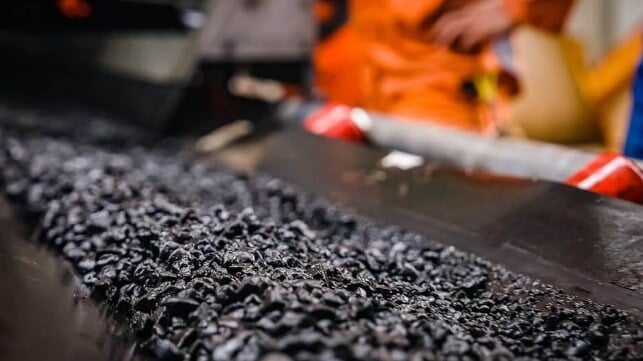Allseas Begins Deep-Sea Trial of Polymetallic Nodule Mining System

Swiss offshore contracting giant Allseas has begun a controversial deep-sea mining test for Canadian firm The Metals Company, a startup in which Allseas holds an eight percent stake.
The firm's converted drillship, the Hidden Gem (ex name Vitoria 10000) has deployed to the Pacific's Clarion-Clipperton Zone to test out a technologically-advanced subsea collection system. The vessel carries a crawler designed to hoover up manganese nodules, small grape- to potato-sized accumulations that grow on the bottom over a period of millions of years. Good-quality nodules contain about 1.5 percent nickel, 1.0 percent copper, 30 percent manganese and about 0.25 percent cobalt, along with traces of rare earth metals, according to the International Seabed Authority. The total value of the deposits in the region has been estimated at $8-16 trillion.
During a pilot test, the Hidden Gem and its robotic nodule collection system recovered about 14 tonnes of nodules from a strip about 150 meters long over the span of an hour. The ship uses a riser system to lift up nodules from the bottom, some 4,300 meters below, using compressed air to push them up the pipe. On the surface, they are cleaned and stowed for transport.
The trials are ongoing and are being closely monitored for environmental effects, including sediment plume size, underwater acoustics and other factors. A team of scientists on a separate monitoring vessel are on scene to acquire data and study the tests.
"We find ourselves at a historic moment in the development of this industry. Once again, our strategic partner Allseas have shown why they’re the best in the business when it comes to pioneering offshore engineering and operations. This is just the beginning, and we look forward to sharing more news as the trials and impact monitoring continue this quarter," said The Metals Company CEO Gerard Barron in a shareholder update.
Some oceanographers warn that the impact of deep-sea mining in the Clipperton Zone could be irremediable. Certain highly specialized bottom-dwellers live solely on the nodules, and relatively little is known about this seabed habitat. About 70-90 percent of species recovered from the region are new to science, reflecting unusually high biodiversity - and there is a possibility that the nodules themselves, as an attachment surface, could be the reason why.
The last mining experiment in the area, a 1989 ploughing simulation dubbed DISCOL, created an eight-meter-wide track free of sea life to recreate the effects of nodule extraction. Local bottom-dwelling species have still not returned some 30 years later, according to the project's sponsors.
